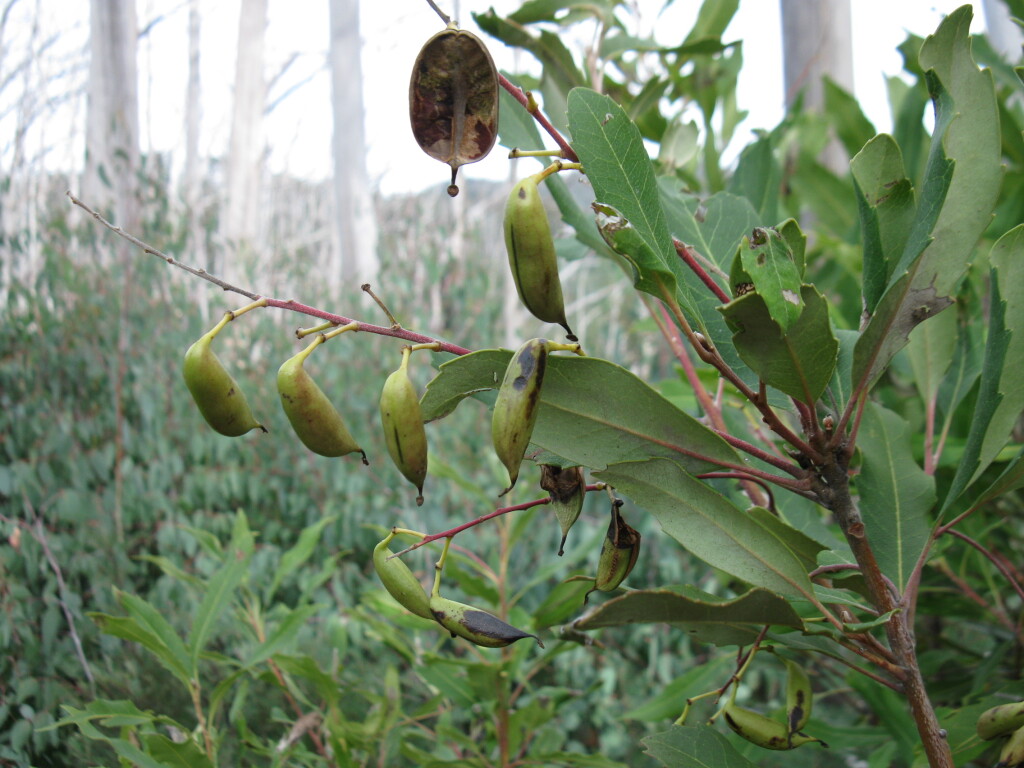Lomatia fraseri
R.Br. Tree LomatiaShrub or small tree to 8 (–20) m high; buds rusty-hairy. Leaves lanceolate to elliptic, 6–12 cm long, 1–3.5 cm wide, dull green, faintly net-veined and glabrous above, pale yellow-green, rusty or silvery, silky-hairy below; apex acuminate; margins deeply or shallowly toothed; petiole 10–25 mm long. Inflorescence a terminal or axillary raceme or panicle, 8–12 cm long, mostly shorter than leaves; pedicels 5–10 mm long. Tepals 7–9 mm long, white or cream, densely pubescent. Follicle 20–30 mm long, leathery, blackish; seeds c. 10 per follicle, to c. 17 mm long including wing. Flowers Dec.–Feb.
VVP, VRiv, GipP, OtP, WaP, CVU, NIS, EGL, EGU, WPro, HSF, HNF, OtR, Strz, MonT, HFE, VAlp. Also NSW, Tas (sparingly established). Widespread and sometimes locally common in wetter mountain forests of eastern Victoria, with isolated western records for the Otway Ranges.
This species is readily distinguished by the pubescent tepals and silky-hairy leaf undersides. Plants somewhat intermediate with Lomatia myricoides have been recorded north of Dargo and near Orbost.
Jeanes, J.A. (1996). Proteaceae. In: Walsh, N.G.; Entwisle, T.J., Flora of Victoria Vol. 3, Dicotyledons Winteraceae to Myrtaceae, pp. 830–887. Inkata Press, Melbourne.
 Spinning
Spinning

